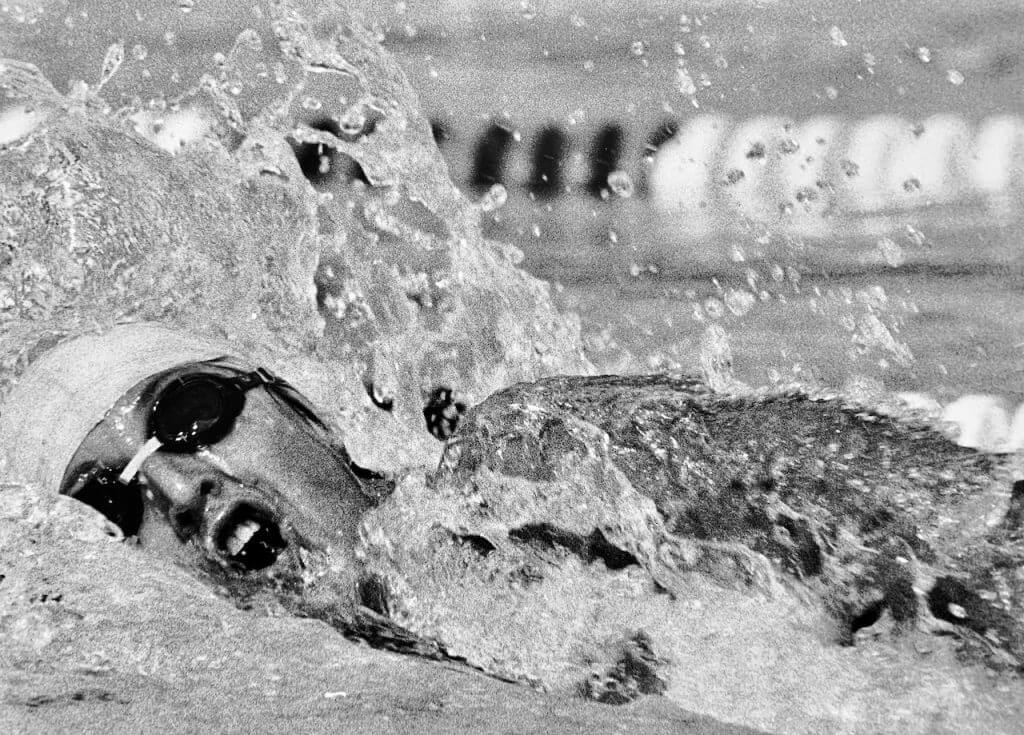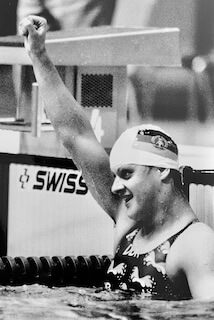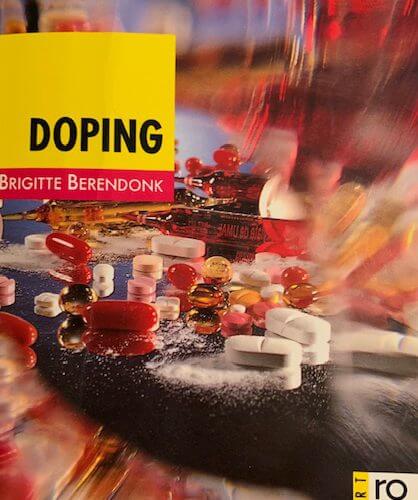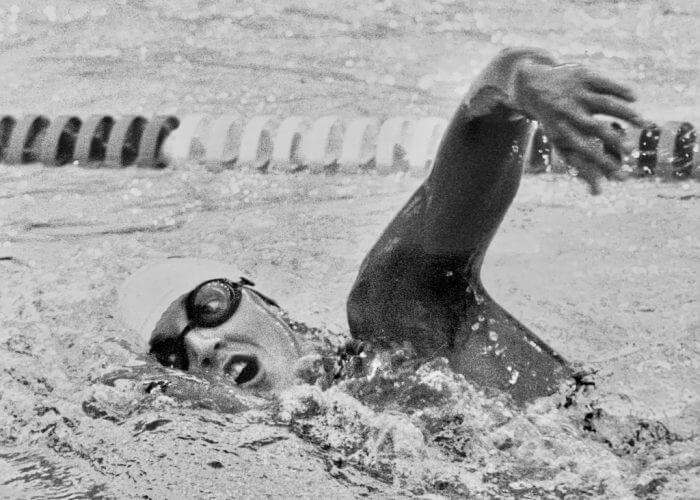Memories of Moscow 1980: When Barbara Krause Took 100 Free Below 55sec 20 Years Before Her Day In Court With Kipke

Today marks the 40th anniversary of the second day of racing in the pool at the 1980 Olympic Games in Moscow, where Barbara Krause led the latest assault on global standards with a second World record in 24 hours as the first woman to race inside 55sec over 100m freestyle. Painful truth and consequence would follow in the years ahead. Swimming World continues its 40th anniversary coverage of the events of Moscow 1980 and their impact on those who missed out and what the Moscow Games meant for those who made it, even, in some cases, when their Governments did not endorse their participation but their nations did.
Our Moscow 1980 Olympics coverage so far:
- Memories of Moscow 1980 – When Sergei Fesenko Became The First Soviet Swimmer Among Men To Claim Olympic Gold
- Memories of Moscow 1980 – 40 Years Since Boycott Buried The Chances Of Cheryl Gibson & Maple Mates
- Moscow Olympic Flagbearers Max Metzker And Denise Boyd Linked Forever In Australia’s Proud Olympic History
- USOPC CEO Sarah Hirshland to 1980 Olympic Team: ‘You Deserved Better’
- The Moscow Boycott: A Toxic Mix of Sports and Politics Proved Costly for Hard-Working Athletes
On this day 40 years ago in Moscow, Barbara Krause claimed the first of three gold medals at the 1980 Olympic Games. Having claimed her place in lane four for the final of the 100m freestyle by becoming the first woman ever to race inside 55sec, on a World record of 54.98, she then claimed the crown in 54.79.
After receiving the big prize, Krause told reporters: ”After the world record in heats, I thought I would probably get under 55 seconds today. That was the basic goal in the race today.”
Miss Krause said she regretted not being able to swim against the Americans because of boycott, noting: ”They trained hard and were well prepared”, before adding:
”Still, after tonight’s world record, I consider myself the fastest freestyler in the world.”
She led a GDR sweep ahead of a 55.16 from Caren Metschuck and 55.65 from Ines Diers. The closest to them was the USSR’s Olga Klevakina, on 57.40, Dutch challenger Conny van Bentum on 57.63, almost three seconds back from Krause racing in a time-warp.
Taking four snapshots along the decades since, we find this: in 1990, the first year after the fall of the Berlin Wall, Krause would have topped the World rankings ahead of a 55.12 from China’s Zhuang Yong; in 2000, when Inge de Bruijn led the world rankings with her 53.77 World record on the way to Sydney gold, Krause’s 1980 mark would still have ranked 7th; in 2010, the first year of a ban on non-textile, with Ranomi Kromowidjojo on 53.44 on the way to London 2012 gold, Krause would still have been in the top 30 that year; and in 2019, with 2016 Olympic champion Simone Manuel at the helm on 52.04, Krause’s 1980 effort comes in just inside the best 60 after four decades.

Caren Metschuk – Photo Courtesy: NT/CL-archive
On the way to gold in Moscow, Krause turned first in 26.81, with teammates Diers and Metschuck on 27.11 and 27.20 respectively and hinting at the wipeout on its way. Metschuck later became a coach and trained Thoma Rupprath (GER) in Rostock at some point in his career.
Once asked by this author what she felt about the GDR regime and its doping, she replied that she thought that others were doping, too and that she had always “felt like I was in the safest place because the doctors were there looking out for our health all the time”.
Moscow gold over 100m would mark the last of the three global standards set by Barbara Krause over 100m, one that would survive until Kristin Otto claimed the 1986 World title in 54.73 bound for a record six gold medals at the 1988 Seoul Olympics a touch over a year before the fall of the Berlin Wall and confirmation of a truth yet more terrible than what many had suspected.
Krause, like all her teammates, had been guinea pigs in the latest pharmaceutical experiment one sports men and women the world had ever known – or at least known of: State Plan 14:25 was the basis of plying athletes across most sports with the steroid Oral Turinabol, among other products, as supporting means. Girls as young as 11 are known to have been put on courses of drugs that would lead to their androgenization.
Effectively, young female swimmers were given the strength and characteristics of boys so that they might beat women and girls. And so they did.
Victories in Moscow over 100m and 200m freestyle and her leading roles in relays made Krause synonymous with sprints but her first World record was over 400m freestyle, a 4:11.69 at Olympic trials in 1976. She never made it to Montreal. The official explanation was that illness had intervened. In one sense that was true enough, a form of sickness a part of the vast bulk of GDR swim results between, at the very least, 1973 and 1989.

Brigitte Berendonk – Von Der Forschung Zum Betrug
The truth about her absence from Montreal: she was removed from the team under the orders of GDR team doctors because they had miscalculated a doping dose and feared than internal tests showing ‘positiv’ for ‘testosterone’, according to files retrieved from an archive of ‘Stasi’ (state police’) papers saved from the shredders by Dr Werner Franke and his wife Brigitte Berendonk, author of “Doping – Von Der Forschung Zum Betrug” (From Research to Fraud) might show up in testing at Montreal.
Those archives also told the truth known to scientists, doctors, politicians and some coaches at the time they agreed a policy – and then enacted it – to dope an estimated 10,000 athletes, many of them underage and the greatest impact seen among girls and women. The architects and administrators of State Plan 14:25 knew that androgenisation of women would take place.
If that manifested itself in the shape of “bulging muscles”, as the Globe and Mail reported this day 40 years ago, deep voices and other masculine traits, the hidden horror behind the gold medals would emerge sometime after the lights in Moscow had faded: Barbara Krause gave birth to two severely disabled children. She was far from being rare in the community of former GDR athletes when it came to the birth of disabled children, a high rate of miscarriages and suffering a great many other health issues down the decades long after their racing days were done.
Born on July 7, 1959 in East Berlin, Krause won her first title at 16 during the 1975 World Championships in Cali, Colombia, as a member of the GDR 4×100m freestyle relay. In 1976, she was primed to be a multi-medallist at Montreal 1976 but the lab said no. In 1977 she claimed over 100m freestyle and in both GDR relays at the European Championships in 1977. A year later, Krause was a member of a GDR team that – relatively speaking – underperformed at the World Championships in West Berlin.
Krause had set the 100m free world record at 55.41 six weeks before at East German trials but 55.68 in West Berlin was good enough for gold by 1.2sec. Over 200m, Krause was thumped by American Sippy Woodhead who rolled towards Moscow 1980 with three world records under her belt over four lengths before being denied not by the GDR but her own country’s boycott.
That Berlin 1978 meet would have been the last at which Petra Thumer, the 1976 Olympic 400 and 800m freestyle champion, might have raced at but Thumer never made it. According to Christiane Knacke, the first woman to crack 1min over 100m butterfly all the way back in 1977, she and Thumer were pulled out of line awaiting transport to West Berlin, driven south to Kreischa, the IOC-accredited laboratory, and put on a diet of water and stoic bikes to “wash us clean” after internal tests had returned ‘positiv’, as the East German Stasi file notes.
The record shows that the laboratory at Kreischa supposed to help keep sport clean was used to protect the GDR from doping detection among athletes heading out to international competition.
Moscow 1980, this day 40 years ago, was the start of the highlight on the result sheet of Barbara Krause’s career.
Barbara Krause and The German Doping Trials

Barbara Krause – Photo Courtesy: NT/CL-archive
Some 20 years later, Krause would face FINA Medical Commission man Dr. Lothar Kipke, head of the doping program for the GDR swimming team, in court. He was 72 and was up on charges of assault against minors in the line of his work. He was convicted, received a fine and a suspended sentence, his victims happy to see him found guilty, less happy for him to walk away with one of the many lenient, process-led punishments handed out during a two-year period of trials and the hearing of many athlete tribulations.
Swimmers were among the co-plaintiffs. Their testimonies included details about the “little blue pools” and “blue beans” (Oral Turinabol tablets) they were given from the age of 12/13 for the most part; the regular injections they received, the “vitamins and minerals” in the syringes actually steroids, including some substances that were clinically trialled not on lab rats but “lesser” athletes.
The trials heard (and in some cases saw) about the swimmers’ children, disabled children, a clubfoot here, blindness over there.
Their mothers wanted certainty. Was it the case that not only they were victims of doping but that the scourge of repercussion had been passed on to their offspring?
The two children of Barbara Krause had club feet, the trials were told. Her lawyer, Michael Lehner, applied for scientific clarification pin the cause of such malformations. At the time, German reporter Frank Bachner explained how Lehner believed the trials were not just about convicting the guilty but about education, reassurance and ensuring such woes could never be repeated. Bachner wrote:
“It is also about the peace of mind of mothers. If the children’s malformations have nothing to do with doping agents, they should at least no longer blame themselves. But now they are suffering. They suffer because they feel responsible for their children’s harm. Because in the past they did not fight against doping.”
Clarity on the issue of who knew what and when was not easy to come by during the trials. When one former swimmer said that swimmers “had known what the famous blue pills really were”, the line made headlines. What was less well explained was that “known” meant “suspected something wasn’t right”, in the way that Kornelia Ender once explained that she had grown out of her t-shirts in a matter of a few months but was simply told ‘it’s all that hard work’; “known” as in whatever a child of 13-15 can know within the context of a regime such as that operating in the GDR at the time. Twenty years ago, half-way between the Moscow highs of Barbara Krause and the the low of all that came to pass and what we know of it in 2020, Buchner wrote:
“There are statements by affected women that they suffer enormously from this lack of clarity. There is no study on this topic.”
In fact, there was more clarity on the subject than those responsible were prepared to admit around a decade after the fall of the Berlin Wall.
GDR chief doper Manfred Höppner, the deputy head of the sports medical service of the Stasi and Kipke’s boss, noted in a Stasi report:
“Since the use of anabolic hormones during early pregnancy can lead to deformities in the developing child, the simultaneous use of birth control pills is recommended.”
That realm of pharmaceutical management of girls and young women was hidden from the world. In international forums, Kipke, tub-thumbing a clean-sport message while wearing his FINA blazer, Kipke replied with a smirk to questions about the male characteristics of one Olympic champion by saying: “No, there are no doping pills, of course not. It’s just Czech dumplings and rice pudding for dessert”.
That Olympic champion was Barbara Krause.
Kipke received a FINA silver pin for his services to swimming. He has that honour to this day, calls for the international swimming federation to strip him of the recognition having fallen on the deaf ears of leaders in power since the decade when Krause was still competing.
There was much clarity on Kipke. During the doping trials. Here’s what his boss, Höppner, chief sports medical service spy, wrote about Kipke:
“Dr. Kipke demonstrates a real brutality when injecting [the athletes], by literally driving the syringe into the body without any thought for the pain that causes.”
According to official documents from GDR times, when one young swimmer asked Kipke, one of the overseers of a mass trial of Oral Turinabol on young athletes, about her severe body acne (a result of the use of doping), the member of the FINA Medical Commission replied cynically: “Girls, you love too little.” That, the record shows, was another fabrication, sex between some coaches and the girls they coached one of the least discussed aspects of the GDR sports regime.
Other Day 2 Finals – Moscow 1980
Women’s 200m Butterfly – Athletes: 21; Nations: 14
- 2:10.44or Ines Geissler GDR
- 2:10.45 Sybille Schönrock GDR
- 2:11.66 Michelle Ford AUS
2:12.13 Andrea Pollack GDR
2:14.12 Dorota Brzozowska POL
2:14.83 Ann Osgerby GBR
2:15.22 Agneta Martensson SWE
2:15.70 Alla Grischenkova URS
The world record holder, Mary T Meagher (USA), was absent because of the US-led boycott of the Games in Moscow over the Soviet invasion of Afghanistan. In her absence, Michelle Ford (AUS) prevented a GDR clean sweep when she claimed the bronze medal ahead of defending champion Andrea Pollack. The title went to Ines Geissler by just 0.01sec, ahead of teammate Sybille Schönrock. Nine days later, Meagher, 15, set a world record of 2:06.37 at the US national championships in Irvine, California.
Her time would come: double gold at Los Angeles in the ‘fly events, might well have made Meagher the first (and still, so far, the only) woman in history to claim the 100 and 200m titles and then retain them.
Meanwhile, Ford might have been an Olympic champion this day 40 years ago had it not been for State Plan 14:25. She told reporters in Moscow:
”I’m pleased because I was looking for a medal. It’s a fantastic feeling, and I hope in other races I’ll get more medals and hopefully the gold. It sort of seems like a dream that will never come true, but here it is.”
Her dream would come true before the end of the meet… more on that later in the week.
Men’s 200m freestyle – Athletes: 39; Nations: 27
1:49.81or Sergei Kopliakov URS
1:50.76 Andrei Krylov URS
1:51.60 Graeme Brewer AUS
1:51.86 Jorg Woithe GDR
1:52.60 Ron McKeon AUS
1:52.76 Paolo Revelli ITA
1:52.94 Thomas Lejdstrom SWE
1:53.25 Fabrizio Rampazzo ITA
Sergei Kopliakov and Andrei Krylov provided the host nation with a one-two finish to become the first Soviet swimmers to win medals of any colour over 200m. Kopliakov’s 1:49.81 was an Olympic and European record and the first sub-1:50 effort in Olympic waters. In 1979, Kopliakov, of Belarus, became the first man to race below the 1:50 mark when he set a world record of 1:49.83 in East Berlin on April 7. A year and five days later, before US President Jimmy Carter had declared a US-led boycott of the Games in Moscow, Rowdy Gaines (USA) axed the mark down to 1:49.18. On August 1, 1980, 11 days after Kopliakov had lifted the Olympic crown, Gaines won the 1980 US title in 1:50.02. Like Meagher, Gaines would bide his time and make 1984 a successful Games that might have been a follow-up in other circumstances.
Men’s 100m backstroke – Athletes: 33; Nations: 23
- 56.33 Bengt Baron SWE
- 56.99 Viktor Kuznetsov URS
- 57.63 Vladimir Dolgov URS
57.74 Miloslav Rolko CZE
57.84 Sandor Wladar HUN
57.95 Fred Eefting NED
57.98 Mark Tonelli AUS
58.38 Gary Abraham GBR
The 100m podium was slower than the 1976 medal-winning efforts. Even so, Sweden’s Bengt Baron, an 18-year-old from Finspäng, had a great day. His pre-Games best was 57.77, good for 13th best going in. Lucky for some. Baron’s new best, coming out of a dream with gold round his neck and an unexpected crown on his head, was 56.33. Baron, who had never lived or trained outside his home town, told reporters:
”I still can’t understand that I won this race. I thought Kuznetsov would win, but somehow I made it.”
The silver went to Viktor Kuznetsov (URS), who had returned from a suspension after having tested positive for steroids at the 1978 World Championships in Berlin where Barbara Krause claimed gold and two of her teammates were turned back at the border to avoid embarrassment of the kind Kuznetsov might have felt. Why might? Well, forty years on, the sport continues to tolerate the return of dopers with no reasonable excuse.
Ten days after the Moscow final, Peter Rocca, the 1976 silver medallist, won the US national title in 56.64 ahead of Robert Jackson, on 56.78. The world record stood at 55.19 to retired 1976 champion John Naber (USA).




The end of the article shows mens swim times and not women’s swim times.
I thought the conclusion of the article was to show female swimmer Ford (AUS) winning more medals at the Moscow games.
I think you may need an article edit.
Sheri, the men’s swim times are correct…, there were two men’s finals on day 2… Michelle’s gold will be reported on later in the week … I made that clear by adding a few words on the end of the … dots… thanks.
Swimming World
Swimming World thank you for clarifying. It was a fascinating read! I was a child at the time and didn’t quite understand all the controversies and consequences surrounding 1980 Summer Olympics.
I remember that before the Moscow Games and before the calling for the boycott, I honestly felt Cynthia Woodhead had a legitimate chance for the 100 gold medal. But when the results came in with the two 54 swims from Krause, I knew that Sippy would have lost. Back then, a 54 was comparable to a 51-low by today’s standards. Barbara’s time was shocking.